Study of the Month: November 2020
When I got the idea of writing about Emanuel Lasker, it became necessary to order the new biography about him. I vastly underestimated the wealth of information in it, making it certainly impossible to even begin drawing a comprehensive picture of the second World Chess Champion.
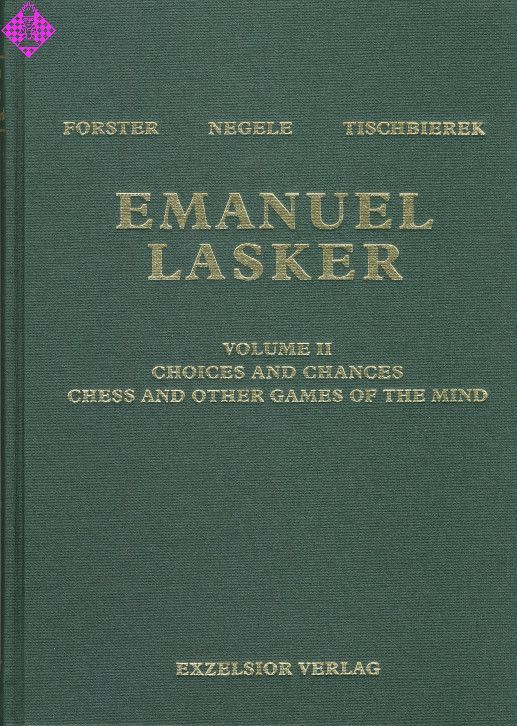 The information in this article is taken from the new Lasker biography (in English) by the German “Exzelsior Verlag”. It was written by Tischbierek, Forster, Negele [editorial board], et al. [writers].
The information in this article is taken from the new Lasker biography (in English) by the German “Exzelsior Verlag”. It was written by Tischbierek, Forster, Negele [editorial board], et al. [writers].
Also: I capitulate. I admit my defeat. This is the article where I must acknowledge that I can’t even begin to comprehensively write about the subject at hand. There is so much information that it is simply impossible — and as such readers interested in Lasker will need to read further in other sources, especially the (expensive but comprehensive) ones that I used. First, we will see how Lasker became World Chess Champion.
Born on 24 December 1868 in Berlinchen (after World War II: Barlinek, Poland; the German might be confusing to German readers, as “Berlinchen” literally means “small Berlin”), ten years later Lasker was sent to Berlin (today the German capital) to live with his brother Berthold and study mathematics. Wikipedia tells as much, but other important information is not found there: Lasker played in “Cafés”/”Kaffeehäusern”, i.e. coffee houses.
Side note: There might be a certain misconception that coffee houses were 17th to 19th century relics, but coffee houses with board games existed decades into the 20th century and they were not only used for chess but also for many other games. In a sense, it is a lost part of history, and it is with an incomprehensible sadness for me that I can, in my best conscience, supply a photo of the legendary Simpsons in the Strand for this article. Dr. Sue Black, the famous cryptography historian, encouraged me to visit Bletchley Park in 2011, but I unfortunately didn’t meet her. Prior I spent a few days in London where also the memories here were photographed.
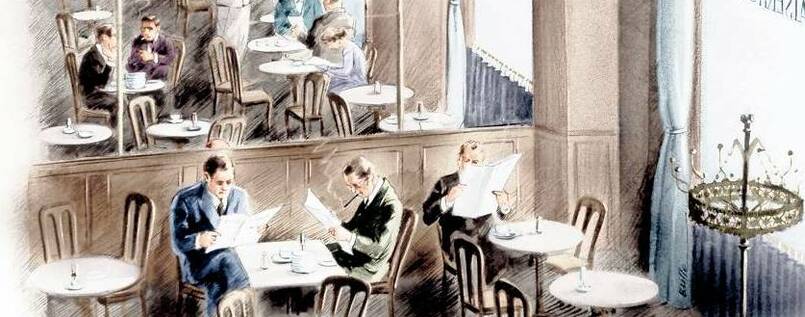
Emanuel and Berthold Lasker played chess in the coffee houses in Berlin, but Emanuel also played Bridge there (under old rules called “Auction Bridge”; the new ones called “Contract Bridge” were invented in the 1920s and have become the nearly only way of playing), a game that would later be important in his life, but to which only few resources are available in connection with Lasker. Thankfully, the second volume of the biography contains a chapter about it. Nonetheless, in this article we will concentrate on chess, so Lasker’s interest and engagement in Lasca, a game, which he invented in 1911, Go, Bridge, Poker, Whistette, and other games shall only be shortly mentioned here, as this is what the title “Master of some” refers to. While he did not really reach a master level, he was considerably strong, stronger than just a “Jack of all trades” would be. His numerous publications on various games confirm his expertise, be it as books, articles, or in one case even as a radio broadcast that — to my knowledge — has no recording but an article about it.
Let us get back to Lasker’s biography. Berthold and Emanuel parted ways early on, as Berthold moved to Berlin to attend school there. Emanuel was 4 years old at the time, and as he continued to grow up in Berlinchen, he playfully explored the village and surroundings. In Berlin, he later visited Café Royal [unrelated to the same named café that exists today] and the Teehalle regularly. I found no further information on either place on the internet. The biography gives us a map and names the addresses: Oranienburger Straße 5 (Teehalle) and Kommandantenstraße 76 / Beuthstraße (Café Royal) as of 1890. Likely, both cafés don’t exist anymore. The Café Kaiserhof, another center of chess life in Berlin in the 1880s, was part of the Hotel Kaiserhof at the Wilhelmplatz, destroyed on 24 November 1943.
Lasker’s school years were hard, but at the age of twelve, he learnt chess. Two years later he gained a deeper understanding of the royal game when he took a year off school. As we read later, due to antisemitism in the German Empire, it would have been very difficult for Lasker to pursue an academic career — Lasker was a jew whose surname likely came from the town of Lask where one of his ancestors, a rabbi, lived. So more important than his school career, in my opinion, was that he met Tarrasch in 1887. Oskar Cordel wrote on 28 August 1887 (Südwestdeutsche Schachzeitung) about Berthold Lasker, and added that his younger brother, Emanuel Lasker, was a splendid player already.
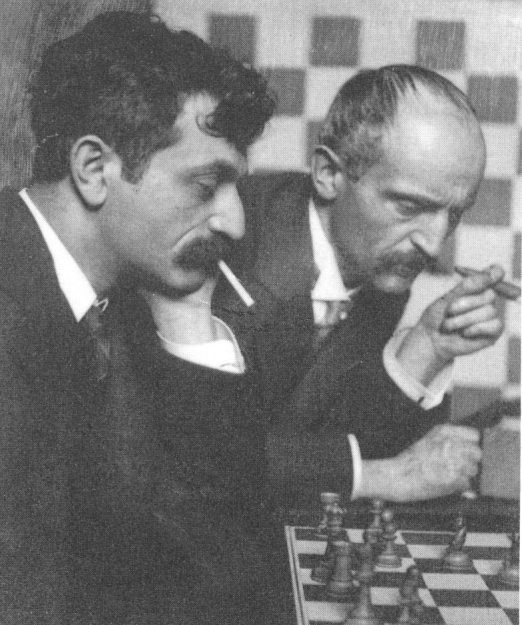 Less than two years later, Emanuel Lasker shared the first/second place in the Breslau premier tournament with Emil von Feyerfeil. See the first appendix below if you want to see what happened (according to Christian Hesse) in the last round game of von Feyerfeil against Lipke. As it was, Lasker was set for a play-off against Von Feyerfeil, which he won, despite having lost their earlier game in the tourney, earning Lasker 300 Marks and the master title. Despite qualifying for the master tournament, Lasker never participated in any tourney of the German Chess Federation again.
Less than two years later, Emanuel Lasker shared the first/second place in the Breslau premier tournament with Emil von Feyerfeil. See the first appendix below if you want to see what happened (according to Christian Hesse) in the last round game of von Feyerfeil against Lipke. As it was, Lasker was set for a play-off against Von Feyerfeil, which he won, despite having lost their earlier game in the tourney, earning Lasker 300 Marks and the master title. Despite qualifying for the master tournament, Lasker never participated in any tourney of the German Chess Federation again.
Lasker, after freshly winning the tourney in Breslau, signed up for the first international tourney of the Dutch Chess Federation in Amsterdam, reaching second place (6 out of 8 points) behind Amos Burn (8), in front of seven other players, including endgame study composer Louis van Vliet.
After matches against Curt von Bardeleben, that was cancelled after a few games, and against Jacques Mieses, that Lasker clearly won, in 1890 England became Lasker’s new place of interest — we won’t mention every tourney and match in which Lasker participated from now on. Lasker’s England tour likely was connected to economic reasons. After later returning to Germany, Lasker decided to play in the 1890 Manchester tourney, but first participated in July in a tourney of the new “Vereinigung deutscher Schachmeister” (German chess masters union) in Berlin. The tourney was a complete failure, as participants withdrew — the events there were scandalous, and the Lasker brothers were declared winners by the tourney director. The news reports about the tourney did seemingly have a lasting effect on Emanuel Lasker’s reputation — he beat his brother in the tourney’s play-off for the title. He would not participate in Manchester.
Less than two weeks prior to this tourney, Lasker made a name for himself with a chess study that would go down in history as one of the best ever conceived, reprinted in nearly every endgame book about rook endgames. It appeared in the same magazine that after the tourney would heavily criticize Lasker for winning the tourney in Berlin.
Later (when?) the position was improved by moving the black king to a6. A position where additionally the white king was moved to a8 was published in 1895. The systematic maneuver leading to the win should be easy to find for readers; otherwise, you can find it at the beginning of the replayable studies below.
After playing in Austria, Lasker returned to Germany and continued his studies in Berlin while playing in coffee houses such as the Teehalle (which by its name rather would have been a tea house). Lasker found paid work in a chess pavillion at an exhibition in London in July 1891. Lasker remained in England and after further successes beat Blackburne 8-2 in an 1892 match for 50 pounds. Afterwards, Lasker started publishing the “London Chess Fortnightly”. Lasker’s lack of business experience and irregular appearance of the magazine led to its quick demise.
Eventually he sailed to America, as he wanted to challenge Steinitz, aboard the British steamship “Spree”. He visited the World Champion, and then played several tourneys and matches, including one in Cuba in early 1893. Eventually, in 1894, the organization of the match became a realistic hope. With a prize fund of $2,000 per player, Steinitz agreed to a match for the title against Lasker. Lasker won 10-5 (the four draws were not counted). The revanche match in 1896 was again won by Lasker, this time by a 10-2 score (and five draws).
In already superior position, 54.Rxf1 secured the win in the final game of the revanche match. (0-1, 59)
Emanuel Lasker remained World Chess Champion until 1921. The rest of this story, when Lasker was at the top of the chess world, is not relevant for his endgame study composing career, neither are his later endeavours in numerous fields shortly described at the beginning of this article.
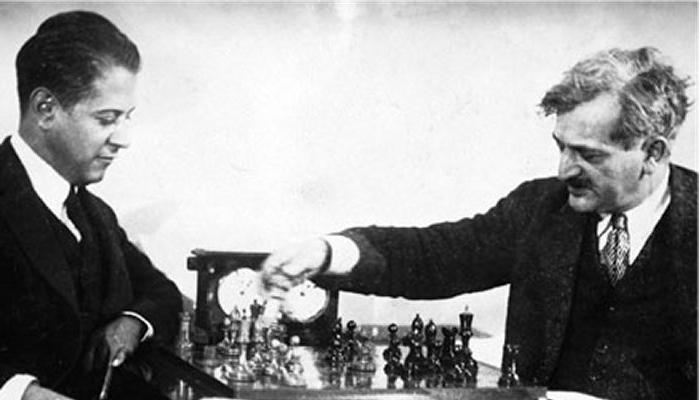
José Raúl Capablanca and Emanuel Lasker
Let us explore Lasker’s family situation. Lasker’s large family tree is researched several generations back, but more important is the family he wanted to found. The great master had no children of his own, but was married twice. Just like a beautiful love song by Meat Loaf, his wife, whom he married in 1911, was named Martha (Martha Rebecca Cohn; née Bamberger, 1867-1942). This second marriage of hers was not on the grounds of breaking an oath, as Cohn’s first husband, Emil Ekiva Cohn (1855-1909), who was a friend of Lasker, had died two years prior. Martha provided a lot of information about Lasker later on.
Martha had a child with her first husband, but the bloodline ran dry two generations later, as daughter Charlotte had one child, Lissi, who remained childless. The Lasker family itself lives on in other branches — notably, Lasker’s sister Amalie not only married and had children of her own, but also adopted a man whose name readers will easily recognize: Curt von Bardeleben. Another famous family member was Berthold’s wife Elke Lasker-Schüler. 75 years later, she still is regarded as one of the best female German poets, but under the pressure of the Nazi regime she had to flee to Jerusalem.
Finally, Lasker’s endgame studies and problems are of interest. For an interesting observation that is not in the biography (yet?), see the second appendix to this article. Lasker composed a number of orthodox chess problems, i.e. mate in x moves. Unfortunately, only a selection of them is in the biography.
As a small illustration for readers, I chose two chess problems. You can try solving the problems, one is easy and one is difficult. The solutions are replayable below, as are a few endgame studies. Ralf Binnewirtz writes that Lasker preferred simple, clearly arranged and game-like positions, but due to his composing style he can’t be attributed to any “school” — during Lasker’s lifetime the transformation from the “Old German School” to the “New German School” took place, the latter of which focused mainly on logical problems, i.e. where a base plan fails at first but can be executed after a “safety plan” (Rudi Albrecht, also inexactly, called it “foreplan”).
Lasker’s endgame studies depicted game-like positions regularly.
Lasker was also a good solver of chess problems. As (non-scientific) experiments show, this also is true about many modern grandmasters. Naturally, through their careers, they are also confronted with positions that could have been endgame studies, although to my knowledge no thorough research on how often those positions are correctly played (i.e. endgames where a sequence of unique moves is necessary) exists.
There are 79 “Lasker” entries in the database of Harold van der Heijden, but those include also the works of Eduard Lasker as well as versions and corrections. Counting manually, there are likely around 30 different endgame studies by Emanuel Lasker.
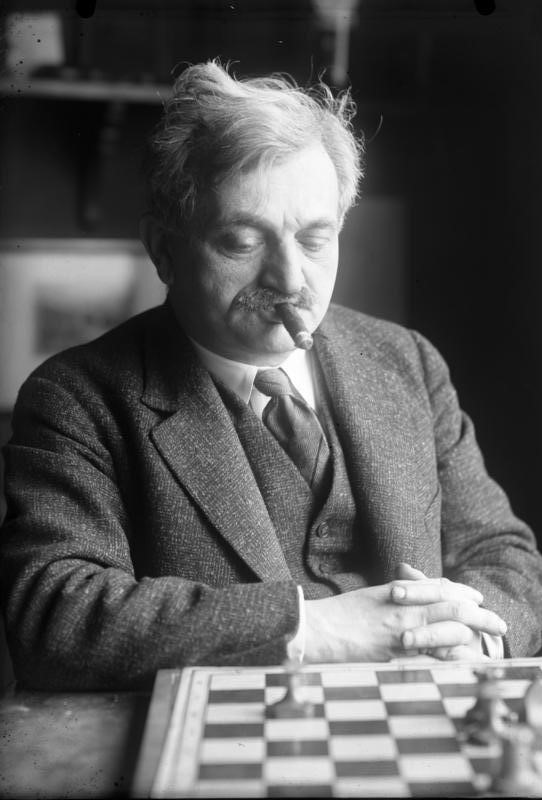 In this article, we were only able to explore the first years of Lasker, the establishment of himself in the world as the strongest chess player, a title which he held until he was defeated by Capablanca in 1921. Yet, he continued playing many tourneys afterwards. Already when he nearly had lost his title to Carl Schlechter in their 1910 match, Lasker was world champion for as long as Kasparov nearly a century later would be. The 1890 endgame study, reproduced in a version above, anticipated the rise, not only in the Soviet style, of systematic maneuvers by several decades. Being a player first and foremost, many of Lasker’s studies fail to impress by modern standards; many are just positions that could have stemmed (and often likely did) from practical games. As such, the example in the second appendix is interesting.
In this article, we were only able to explore the first years of Lasker, the establishment of himself in the world as the strongest chess player, a title which he held until he was defeated by Capablanca in 1921. Yet, he continued playing many tourneys afterwards. Already when he nearly had lost his title to Carl Schlechter in their 1910 match, Lasker was world champion for as long as Kasparov nearly a century later would be. The 1890 endgame study, reproduced in a version above, anticipated the rise, not only in the Soviet style, of systematic maneuvers by several decades. Being a player first and foremost, many of Lasker’s studies fail to impress by modern standards; many are just positions that could have stemmed (and often likely did) from practical games. As such, the example in the second appendix is interesting.
It would go far beyond the scope of the article to list Lasker’s practical successes, but we offer quick information on Lasker’s final years and heritage:
After losing his title, Lasker still participated in many tourneys, and after antisemitism grew in Europe and the Soviet Union, in 1937, Lasker settled with his wife in the United States where his chess and bridge skills allowed him to give lectures. On 11 January 1941, Lasker died in New York City. Germany’s greatest chess master, as a Jew a persona non grata in his own country, unfortunately did not see Germany returning to admire him.
In Potsdam, on 11 January 2001, exactly 60 years after Lasker’s death, the Emanuel Lasker Gesellschaft was founded, Without that society, the research done into Emanuel Lasker would have been unthinkable. More than 150 years after his birth, 125 years after becoming World Champion, Lasker still remains as fascinating as always, and his endgame studies, his problems, even his practical play, are only facets of a personality that went far beyond a single game. Emanuel Lasker, in the truest sense of the phrase, was a Jack of all Trades, and a master of some.
Appendix I: The von Feyerfeil - Lipke controversy
.jpg) Emil Ritter von Feyerfeil [pictured], an Austrian player, is largely forgotten today, and only his date of death is preserved, but not his birthdate. Likely he was born in the 1850s (“around 1855”), dying on 28 February 1917. Paul Lipke (30 June 1870 - 8 March 1955) was a German player of a high level, likely grandmaster strength. His chess career also ended early, as after Vienna 1898 he stopped playing in high-level tourneys. Michael Negele wrote an extensive article in German about Lipke in 2016.
Emil Ritter von Feyerfeil [pictured], an Austrian player, is largely forgotten today, and only his date of death is preserved, but not his birthdate. Likely he was born in the 1850s (“around 1855”), dying on 28 February 1917. Paul Lipke (30 June 1870 - 8 March 1955) was a German player of a high level, likely grandmaster strength. His chess career also ended early, as after Vienna 1898 he stopped playing in high-level tourneys. Michael Negele wrote an extensive article in German about Lipke in 2016.
The controversy in which adjourned game was wrongly reinstated, with a pawn missing, is a curiosity that supposedly prevented von Feyerfeil’s victory ahead of Lasker at the tourney. Christian Hesse wrote in his beautiful “Expeditionen in die Schachwelt” (2006, p.34) that this little pawn on h2 might have changed chess history forever. Had it been correctly placed, Von Feyerfeil likely would have drawn the game, and Lasker might have stopped playing chess tournaments, as he had announced that he would not pursue a professional chess career if he did not win the tourney.
With the pawn on h2 omitted, Feyerfeil played 53.Rh2, and the battle raged on until the 121st move when Lipke won. We have questions about this that won’t be answered: How did von Feyerfeil not notice his Ph2 was missing, a pawn that must have been crucial for the evaluation of the position? Would Lasker really have stopped pursuing a professional chess career? In the end, we can only speculate: writers love a good story. But what really would have happened if Lasker didn’t win the tourney is impossible to know. And it is apparently blatantly easy to omit another crucial detail: even with Ph2, White has not an easy defense. The minor pieces dominate the board easily, and the position very likely is won for Black in a practical game. Would it have been won in a practical game in 1889 as well?
We need to add that other sources give an additional white pawn on a5 in the adjourned position, which seems to be a mistake. They also say that the game was adjourned after 40 instead of 52 moves, which would explain why the missing Ph2 wasn’t noticed. Unfortunately, the Wiener Schachzeitung didn’t exist yet at that time, and I also don’t have any other sources from 1889.
Appendix II: An interesting endgame
Richard Forster wrote (e-mail of 8 November 2020; my translation from German, I slightly changed the presentation for readability, i.e. added a diagram instead of the changes to the position above):
This study originally appeared as endgame no.8 in the “Akademische Schachblätter”, no. 11/12, November/December 1901, p. 97, together with a preceding “twin” (endgame no. 7 [see diagram below])
The solutions appeared in the issue March/April 1902, pp. 33f. Unfortunately I have only a mostly unreadable copy of it. Lasker’s main variation for the twin however seems to have gone as follows:
1...Bb5 2.Kf3 Bc6+ 3.Kf2 Bb7 4.Kg1 Bc6 5.Kh2 Bd7 6.Kg2 Bc8 7.Kf3 Be6 8.Kf4 Bb3 9.g4+ Kxh4 10.Nf5+ Kh3 11.g5 Bf7 12.Ke5 Kg4 13.Kf6 Bh5 14.Ng7 Bf7.
As you can easily reproduce with endgame databases, White has a tight path to victory also after 1.Bb5, and that is by 2.Nf5. It seems to be a fascinating endgame and I didn’t explore all its details. The position after 2.Nf5 would be a draw if the bishop would be on d1 instead of e2, for after 3.Ng7+ Kg6 4.Ne6 Kh5 5.Kf5 Bd3+ 6.Kf6 Kg4 7.Nf4 Kxg3 8.Kg5 Black misses the possibility to return to the diagonal d1-h5 from d3, whereas this would be possible from c2.
A second surprising detail of no.7 is that it is a position of zugzwang and, if I am not mistaken, White to move only wins by inducing this position with Black to move. (1.Nd5 Bd1 2.Nf6+ Kg6 3.Ke5 Bf3 4.Nd5 Kh5 5.Ne3 Be2 6.Kf4).
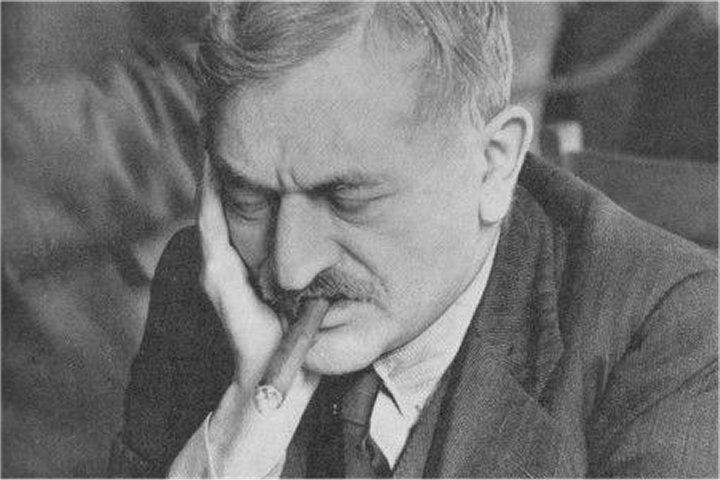
I don’t know how far this endgame (prior to or after Nalimov [databases]) has been analyzed in literature — I didn’t research that. In the Megabase there are several examples for this endgame. For example, position no. 7 emerged in the grandmaster game Barbosa v Jones, [Chess] Olympiad 2012, after the 77th Black move. The same is true for Zaragatski v Danielian, also 2012 (with reversed colors), but here either White just resigned or the final moves are missing.
It might be of note that Lasker had an (only optically) similar endgame on the queenside against Pillsbury in the Paris [1900] tourney. [The bishop was of the relatively other square color, i.e. as if it would have been on e1 instead of e2 in the diagram above. Lasker’s two extra pawns won easily. That practical endgame might have been an inspiration for the endgame study.]
Click or tap an entry in the list to switch positions
You probably know that you can move pieces on our replay boards to analyse and even start an engine to help you. You can maximize the replayer, auto-play, flip the board and even change the piece style in the bar below the board.
At the bottom of the notation window on the right there are buttons for editing (delete, promote, cut lines, unannotate, undo, redo) save, play out the position against Fritz and even embed the ChessBase game viewer on your website or blog. Hovering the mouse over any button will show you its function.
The name Emanuel Lasker will always be linked with his incredible 27 years reign on the throne of world chess. In 1894, at the age of 25, he had already won the world title from Wilhelm Steinitz and his record number of years on the throne did not end till 1921 when Lasker had to accept the superiority of Jose Raul Capablanca. But not only had the only German world champion so far seen off all challengers for many years, he had also won the greatest tournaments of his age, sometimes with an enormous lead. The fascinating question is, how did he manage that?

World Federation for Chess Composition (www.wfcc.ch)
Links
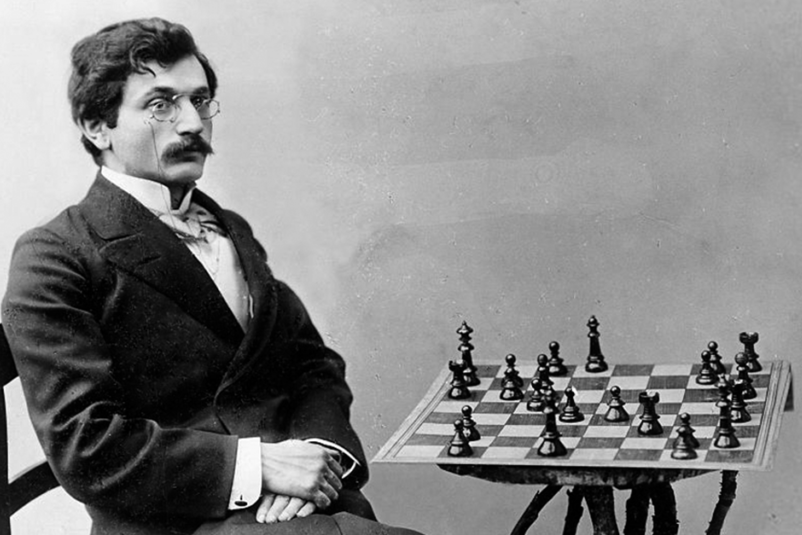

















 The information in this article is taken from the new Lasker biography (in English) by the German “Exzelsior Verlag”. It was written
The information in this article is taken from the new Lasker biography (in English) by the German “Exzelsior Verlag”. It was written 
 Less than two years later, Emanuel Lasker shared the first/second place in the Breslau premier tournament with Emil von Feyerfeil. See the first appendix below if you want to see what happened (according to Christian Hesse) in the last round game of von Feyerfeil against Lipke. As it was, Lasker was set for a play-off against Von Feyerfeil, which he won, despite having lost their earlier game in the tourney, earning Lasker 300 Marks and the master title. Despite qualifying for the master tournament, Lasker never participated in any tourney of the German Chess Federation again.
Less than two years later, Emanuel Lasker shared the first/second place in the Breslau premier tournament with Emil von Feyerfeil. See the first appendix below if you want to see what happened (according to Christian Hesse) in the last round game of von Feyerfeil against Lipke. As it was, Lasker was set for a play-off against Von Feyerfeil, which he won, despite having lost their earlier game in the tourney, earning Lasker 300 Marks and the master title. Despite qualifying for the master tournament, Lasker never participated in any tourney of the German Chess Federation again.
 In this article, we were only able to explore the first years of Lasker, the establishment of himself in the world as the strongest chess player, a title which he held until he was defeated by Capablanca in 1921. Yet, he continued playing many tourneys afterwards. Already when he nearly had lost his title to Carl Schlechter in their 1910 match, Lasker was world champion for as long as Kasparov nearly a century later would be. The 1890 endgame study, reproduced in a version above, anticipated the rise, not only in the Soviet style, of systematic maneuvers by several decades. Being a player first and foremost, many of Lasker’s studies fail to impress by modern standards; many are just positions that could have stemmed (and often likely did) from practical games. As such, the example in the second appendix is interesting.
In this article, we were only able to explore the first years of Lasker, the establishment of himself in the world as the strongest chess player, a title which he held until he was defeated by Capablanca in 1921. Yet, he continued playing many tourneys afterwards. Already when he nearly had lost his title to Carl Schlechter in their 1910 match, Lasker was world champion for as long as Kasparov nearly a century later would be. The 1890 endgame study, reproduced in a version above, anticipated the rise, not only in the Soviet style, of systematic maneuvers by several decades. Being a player first and foremost, many of Lasker’s studies fail to impress by modern standards; many are just positions that could have stemmed (and often likely did) from practical games. As such, the example in the second appendix is interesting..jpg) Emil Ritter von Feyerfeil [pictured], an Austrian player, is largely forgotten today, and only his date of death is preserved, but not his birthdate. Likely he was born in the 1850s (“around 1855”), dying on 28 February 1917. Paul Lipke (30 June 1870 - 8 March 1955) was a German player of a high level, likely grandmaster strength. His chess career also ended early, as after Vienna 1898 he stopped playing in high-level tourneys. Michael Negele wrote an
Emil Ritter von Feyerfeil [pictured], an Austrian player, is largely forgotten today, and only his date of death is preserved, but not his birthdate. Likely he was born in the 1850s (“around 1855”), dying on 28 February 1917. Paul Lipke (30 June 1870 - 8 March 1955) was a German player of a high level, likely grandmaster strength. His chess career also ended early, as after Vienna 1898 he stopped playing in high-level tourneys. Michael Negele wrote an 






